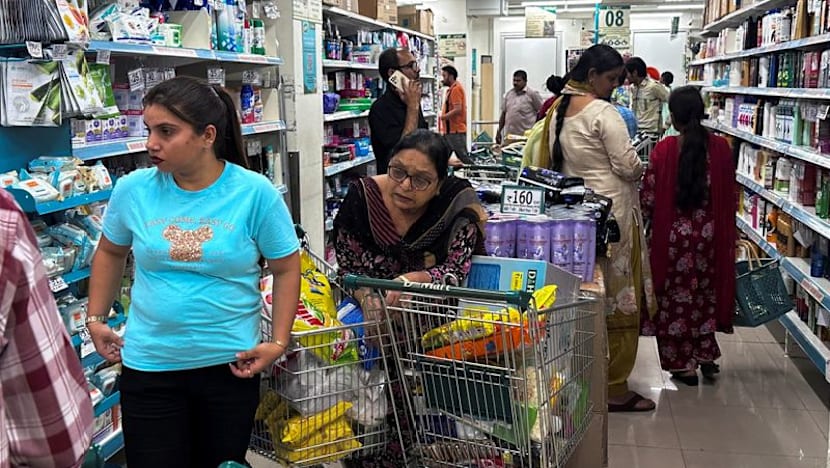Top Stories
India Launches Major GST Reform to Alleviate Living Costs

The Indian government is set to implement a significant overhaul of the Goods and Services Tax (GST), the most substantial change since the tax was introduced eight years ago. This reform aims to alleviate the rising cost of living for many citizens, particularly as inflation continues to impact daily expenses. Prime Minister Narendra Modi announced the initiative on August 15, 2023, during the country’s Independence Day celebrations, promising to make everyday products more affordable for the nation’s population.
For individuals like Mumbai resident Bajeer Khan, who earns approximately US$300 a month, the rising cost of living has become a pressing concern. Khan expressed optimism about the proposed changes, stating, “It will be good if they do reduce the GST to 5 per cent. If this happens, maybe the cost of living will come down.” The government plans to implement the tax cuts before Diwali, India’s largest Hindu festival, in October.
Details of the GST Overhaul
The forthcoming GST reform will simplify the current tax structure, which features four categories ranging from 5 to 28 per cent. Under the new plan, most products will fall under two rates: 5 per cent and 18 per cent. Essential consumer items, such as talcum powder, toothpaste, and shampoo, will see a reduction in GST from 18 per cent to 5 per cent. Additionally, products like butter will shift from 12 per cent to 5 per cent, while taxes on air conditioners and televisions are expected to decrease from 28 per cent to 18 per cent. However, luxury goods and items considered harmful, such as cigarettes, will face higher taxes, with GST potentially rising from 28 per cent to 40 per cent for tobacco products.
The GST Council, which is responsible for finalizing the specific items subject to tax cuts, is expected to meet this week to discuss these changes. Economists anticipate that the reforms could make vital everyday items more accessible for millions of Indians while ensuring that non-essential goods remain heavily taxed.
Economic Implications and Concerns
While the reform aims to simplify a complex tax system, it also comes in response to economic pressures, including recent tariffs imposed by the United States totaling 50 per cent. According to Madhavi Arora, chief economist at financial services provider Emkay Global, these domestic reforms are intended to mitigate the impact of external factors on consumption. “To some extent, to offset those pains, there are now domestic reforms that are being taken by the government of India to ensure that at least consumption is not being hit dramatically,” Arora explained.
Despite the potential benefits of increased consumer spending, there are concerns regarding revenue collection for both central and state governments. Arora estimates that the overhaul could lead to a reduction in revenue equivalent to 0.4 per cent of India’s gross domestic product. She suggested that this loss may eventually be compensated for by heightened consumer spending, benefiting sectors such as consumer goods and automobile manufacturing.
Opposition-led states have expressed strong reservations about the proposed GST changes, fearing loss of revenue. These states are calling for either compensation or increased flexibility to raise their own taxes to mitigate potential losses.
Business owners are also closely monitoring the situation, particularly in the mobile phone industry. Mihir Prajapati, who operates a mobile phone shop named Maitri Mobile, advocated for phones to be classified as “essential items” to qualify for the 5 per cent GST rate. Prajapati emphasized the impact of the current 18 per cent tax, stating, “If the GST rate comes down, then we can also plan to open another shop and expand our business. The overall mobile industry would grow, and we would also grow.”
This major GST reform reflects the Indian government’s commitment to addressing cost-of-living challenges while balancing the need for a sustainable revenue model. As the GST Council finalizes details, the nation awaits how these changes will shape the economic landscape in the coming months.
-

 Business5 months ago
Business5 months agoKenvue Dismisses CEO Thibaut Mongon as Strategic Review Advances
-

 Lifestyle4 months ago
Lifestyle4 months agoHumanism Camp Engages 250 Youths in Summer Fest 2025
-

 Sports4 months ago
Sports4 months agoDe Minaur Triumphs at Washington Open After Thrilling Comeback
-

 Sports5 months ago
Sports5 months agoTupou and Daugunu Join First Nations Squad for Lions Clash
-

 Top Stories5 months ago
Top Stories5 months agoColombian Senator Miguel Uribe Shows Signs of Recovery After Attack
-

 World5 months ago
World5 months agoASEAN Gears Up for Historic Joint Meeting of Foreign and Economic Ministers
-

 Health4 months ago
Health4 months agoNew Study Challenges Assumptions About Aging and Inflammation
-

 Business5 months ago
Business5 months agoOil Prices Surge Following New EU Sanctions on Russia
-

 Entertainment4 months ago
Entertainment4 months agoDetaşe-Sabah Violin Ensemble Captivates at Gabala Music Festival
-

 Entertainment4 months ago
Entertainment4 months agoBaku Metro Extends Hours for Justin Timberlake Concert
-

 Top Stories5 months ago
Top Stories5 months agoRethinking Singapore’s F&B Regulations Amid Business Closures
-

 Business5 months ago
Business5 months agoU.S. House Approves Stablecoin Bill, Sends to Trump for Signature









